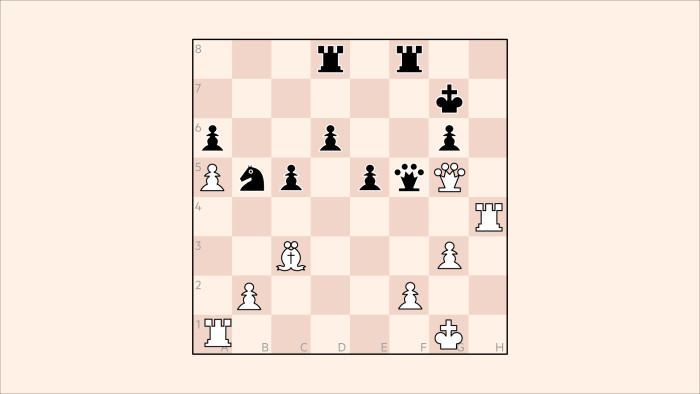Chess: Fide raises profile of women’s game with Grand Prix

Fide, the global chess body, is implementing new moves to raise the profile of the women’s game.
From 2024, the open and women’s candidates tournaments to decide the next world title challengers will be played at the same site and time rather than separately, while the 16-player women’s Grand Prix, now in progress in Munich and with its 11th and final round starting at noon on Monday February 13, provides a valuable incentive for women professionals.
Decades of experience have shown that, at top level and for whatever reasons, women play on average 200 rating points weaker than men. Official international titles reflect this difference, so that 2500 is the level for a full grandmaster title, while the WGM minimum is only 2300. This gap would equate to an expected male score of around 75-80 per cent. Women can compete in open events as well as in those restricted to female players, but still form under 10 per cent of active competitors.
A decade or two ago, Hungary’s Judit Polgár and China’s Hou Yifan were strong enough to take on the best male grandmasters, whereas the current world women’s champion, Ju Wenjun, rarely competes abroad, and her scheduled title defence in summer 2023 will be against a compatriot. In total contrast, hardly a week passes without Magnus Carlsen being in action somewhere, either online or in person.
The outlook for women’s chess would improve dramatically if there was a rising star from a western nation, a real-life version of Beth Harmon of The Queen’s Gambit. Fide therefore hopes that its new initiatives will spark the emergence of new talents.
Germany’s top woman grandmaster, Elizabeth Paehtz, had two contrasting episodes at the start of Munich. Matched against her compatriot, Dinara Wagner, in round one, she scored with an elegant checkmating attack in just 24 moves.
Next day, Paehtz launched the lively Evans Gambit, the invention of a 19th century mariner, against the experienced Alexandra Kosteniuk. In an even position, Paehtz made a classic blunder. She moved her bishop from c1 to f4, reckoning that Black rook at e4 could not take it because of Re1-e8 mate. Paehtz had overlooked that the black queen at a4 guarded e8, so that White just lost her bishop.
Decades ago Hugh Alexander, the FT columnist and Bletchley and GCHQ codebreaker, used to say that backward diagonal queen moves were the easiest to overlook. Evidently Alexander was right . . .
Puzzle 2506
Eltaj Safarli v Nils Grandelius, Dubai 2015. White to move and win. His method of breaking down Black’s seemingly solid defence is a technique worth remembering.
Click here for solution
Comments